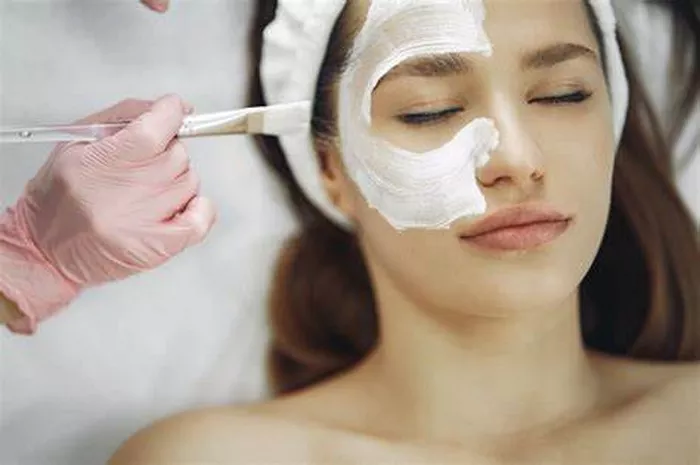Burn scars can be a painful and distressing reminder of past injuries, often causing discomfort and self-consciousness for those affected. In the quest for scar management, many turn to over-the-counter remedies like Vaseline (petroleum jelly) in hopes of minimizing scar appearance and promoting healing. But does Vaseline really help with burn scars? In this article, we’ll delve into the science behind scar formation, explore the potential benefits of Vaseline, and provide evidence-based insights to help you make informed decisions about scar management.
The Science of Scar Formation: Unveiling the Healing Process
Before diving into the efficacy of Vaseline for burn scars, it’s essential to understand how scars form and evolve. When the skin is injured, whether through burns, cuts, or abrasions, the body initiates a complex healing process to repair the damaged tissue. This process involves inflammation, cell proliferation, and tissue remodeling, ultimately leading to the formation of scar tissue.
In the case of burn injuries, the severity of the burn (ranging from first-degree to third-degree) and the depth of tissue damage influence the extent of scarring. Superficial burns may result in minor scarring, while deeper burns can lead to more extensive and noticeable scars.
The Role of Moisturization in Scar Management
Moisturization plays a crucial role in scar management, as it helps to keep the skin hydrated, supple, and pliable. Well-moisturized skin is less prone to itching, tightness, and discomfort, which are common complaints associated with scar formation. Additionally, moisturization may aid in reducing scar thickness and improving overall scar appearance.
Exploring the Potential Benefits of Vaseline for Burn Scars
Vaseline, or petroleum jelly, is a popular moisturizing agent known for its occlusive properties, which create a barrier on the skin’s surface to lock in moisture. Many believe that applying Vaseline to burn scars can help hydrate the skin, soften scar tissue, and improve scar appearance. While there is limited scientific evidence specifically evaluating the use of Vaseline for burn scars, its moisturizing properties suggest potential benefits for scar management.
What the Research Says: Insights from Studies on Vaseline and Scar Healing
While there is a lack of research specifically examining the use of Vaseline for burn scars, several studies have investigated the efficacy of petroleum jelly in wound healing and scar management. These studies suggest that petroleum jelly may help improve wound healing outcomes by promoting a moist wound environment, reducing inflammation, and preventing excessive scab formation.
One study published in the Journal of Wound Care found that petroleum jelly was effective in preventing wound infection and promoting wound healing in a group of patients with acute wounds. Another study published in the International Wound Journal concluded that petroleum jelly was safe and effective for preventing and treating dermatitis in infants.
While these studies provide valuable insights into the general benefits of petroleum jelly for wound healing and skin hydration, more research specifically focused on its efficacy for burn scars is needed to draw definitive conclusions.
Practical Tips for Using Vaseline for Burn Scars
If you decide to incorporate Vaseline into your scar management routine, here are some practical tips to maximize its effectiveness:
Cleanse the Area: Before applying Vaseline to the burn scar, gently cleanse the area with mild soap and water to remove any debris or bacteria.
Apply a Thin Layer: Use clean hands to apply a thin layer of Vaseline to the scarred area, ensuring that it is fully covered but not overly greasy.
Massage the Scar: Gently massage the Vaseline into the scar tissue using circular motions. This can help improve blood circulation and promote collagen remodeling.
Cover if Necessary: If the scar is in an area prone to friction or irritation, consider covering it with a non-adherent dressing or silicone sheeting after applying Vaseline.
Be Consistent: Consistency is key when using Vaseline for scar management. Apply it regularly, ideally multiple times per day, to keep the scar tissue hydrated and supple.
Consultation with a Healthcare Professional
It’s important to note that while Vaseline may offer potential benefits for scar management, it is not a substitute for professional medical advice and treatment. If you have concerns about burn scars or are considering using Vaseline as part of your scar management routine, it’s advisable to consult with a healthcare professional, such as a dermatologist or plastic surgeon, for personalized guidance and recommendations.
Conclusion: Navigating Scar Management with Evidence-Based Insights
While the use of Vaseline for burn scars is a common practice, the scientific evidence specifically supporting its efficacy is limited. However, its moisturizing properties suggest potential benefits for scar hydration and overall scar management. As with any skincare product, it’s essential to approach Vaseline use with caution and consult with a healthcare professional for personalized recommendations.
By understanding the science behind scar formation, exploring the potential benefits of Vaseline, and incorporating practical tips for scar management, you can make informed decisions about your skincare routine and work towards achieving optimal scar healing outcomes. Remember, every scar tells a story, and with proper care and attention, you can help your scars fade into the background, allowing your true beauty to shine through.
[inline_related_posts title=”You Might Be Interested In” title_align=”left” style=”list” number=”6″ align=”none” ids=”7607,7348,7277″ by=”categories” orderby=”rand” order=”DESC” hide_thumb=”no” thumb_right=”no” views=”no” date=”yes” grid_columns=”2″ post_type=”” tax=””]
































